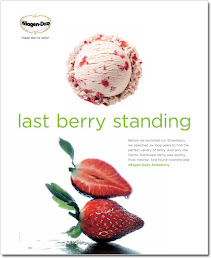A year or so ago I was at my local supermarket when the bright green cover of a magazine caught my eye. It was San Francisco magazine asking me if I was suffering from anxiety from too many options to live green, shop green, and be green. “Eco-anxiety” I think they called it. I thought to myself, YES this is ME! How did they know?
At the time, among other green initiatives in my life, I had become devoted to finding sustainable meat. I consulted websites, researched brands I found at Whole Foods and a local organic food market near my house, and tried to learn more about “sustainable” farming. After several months of this effort, I read the book Omnivore’s Dilemma, which only strengthened my resolve. But yet, I was overwhelmed with options. Despite all my research I had trouble determining which sources of foods were truly “sustainable.” One favorite brand of eggs proudly claimed “free range” on its packaging, but the myth of its chickens roaming free in a field was later debunked by another source. Neiman Ranch was rumored to treat its animals well, but I later learned its founder split with the organization believing that its organizational policies did not match the marketing hype.
Apparently, I am not alone. American consumers are awash with green marketing messages. When I met Damien Huang, VP of Design at Patagonia, he mentioned that his company assumes its customers are not willing to pay a large premium for sustainable products, and consequently Patagonia aims to price competitively. Other students were amazed by this, but honestly it is no wonder to me that many consumers will not pay a premium for all things “green” and “sustainable.” As more and more companies hop on the eco-friendly bandwagon, it is increasingly difficult to distinguish real claims from fake ones. In addition, assessing whether one product is more sustainable than another is incredibly complex, requires a vast amount of insight into the product’s value chain, and could be a full-time job. Busy Americans do not have time for such research, so it does not surprise me that many consumers are skeptical of the “green” products they encounter.
What happened to my sustainable food initiative, you might wonder? Tiring of my effort to identify the most sustainable meats, I gave up on eating meat all together. I buy beans at the grocery store now for my protein. With beans I no longer have to worry about whether my food was allowed to roam free and was treated humanely. Plus, I save money.
To me, this experience highlights the challenge for companies that want to market their sustainable products. It can safely be assumed that companies don’t intend to scare customers like me away from their product categories entirely. Brands that can make true claims that their products are environmentally friendly must cut through the so-called greenwash clutter to be effective. At last year’s Net Impact conference, I attended a panel on just this topic. Panelists there noted that company advertising, not surprisingly, is the least trusted source of environmental information about the environmental sustainability of products and companies. In addition, in a recent article called “The Green Trust Gap,” I read that only 11% of consumers will rely on product packaging and only 5% on company advertising when determining the eco-friendliness of a product. To successfully convey their green message to consumers, the Net Impact panelists suggested that companies should:
- Advocate for independent environmental certification in their industries.
- Partner with trusted environmental organizations that can lend credibility.
- Create transparency by providing consumers insight in to their supply chains and operational practices, including good with the bad. Supplying such information on the website is beneficial.
- Develop reports on social and environmental responsibility, including targets for improvement and progress against those targets.
- Provide forums for constructive feedback and engagement with consumers.
With that being said, I know that companies will not stop advertising. I wonder how organizations can make their conventional advertising more effective at conveying a message of environmental responsibility. I hope to explore this topic further while at school and with people in my network.
- Lauren
Want to learn more? Click here for: LOHAS "Green Trust Gap"








